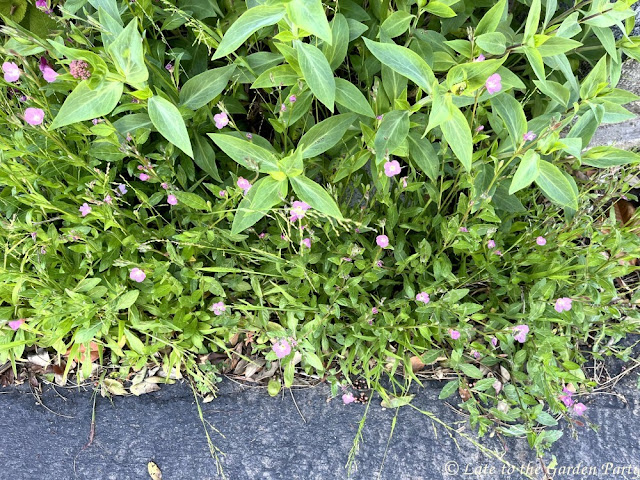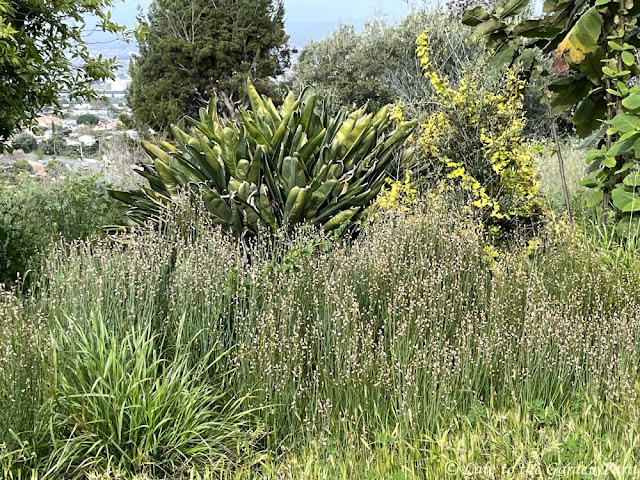As the saying goes, "April showers bring May flowers" but rain in general is guaranteed to deliver weeds. Some are pretty wildflowers that have simply gotten a bad rap due to their assertive behavior. Others are bona fide weeds, although it's surprising how often - if you dig deep enough - they have positive attributes you may at least want to recognize as you yank them out and dump them in your green waste bin.
I'm taking advantage of a meme inaugurated by Cathy of Words and Herbs this week to share three different weeds, one that isn't currently in my garden but seems to be moving its way throughout my neighborhood, creeping ever closer, and two others that are well-established in my garden and probably much of the surrounding area.
The first weedy wildflower is Asphodelus fistulosus, commonly known as onionweed. It's native to the Mediterranean area but it's become an invasive weed in the US, especially in California, Arizona, New Mexico, and Texas. It reportedly entered the US as an ornamental plant and spread uncontrollably through prolific self-seeding. I see it in untended areas along the street in my neighborhood, although I've yet to see it pop up in my own garden.
 |
| They remain prevalent in this homeowner's front garden, as well as many others. |
 |
| The flowers are attractive when viewed close up. However, all those black seeds will drop and produce more plants. The fibrous roots, if cooked, can be eaten as vegetables, or so I've read. The seeds can also be used as a diuretic and reportedly as a topical treatment to treat ulcers and inflammation (source). |
The second weed is prevalent on my back slope. Its foliage reminded me of certain Geraniums but it was very different from the Geranium incanum I featured in a Wild and Weedy post last year. My mobile phone's plant identification application identified this one as Geranium pusillum, commonly known as small-flowered geranium, a descriptive tag lacking in imagination. It's a herbaceous annual native to Europe but now often found in disturbed sites throughout North America.
 |
| It's the plant shown growing up through a patch of lamb's ear here |
 |
| The flowers should be described as tiny rather than "small". Ignoring the white alyssum (Lobularia maritima, also a weed here), can you make out the Geranium's pinky-purple flowers? |
 |
| This closeup of the flower was the best I could manage. Geranium pusillum has been used medicinally as a pain killer, an astringent to treat abrasions, and as a treatment for wounds. |
The last weed is Oenothera speciosa, also known as pink evening primrose, which I included in a post last year. This is probably the best known of the three weeds. It's a pretty wildflower but its prolific nature has many gardeners pulling it out at first sight. So far, in my garden, it's present on the back slope and my dry north-side garden, although I've seen evidence that it'd spread further if I was less vigilant. Mine haven't flowered yet but I've seen seedlings in both of the areas I mentioned getting ready to do so.
 |
| This wider shot shows the size of the tiny flowers growing in the neighbor's front border relative to the foliage of Centranthus ruber |
All material © 2012-2024 by Kris Peterson for Late to the Garden Party



